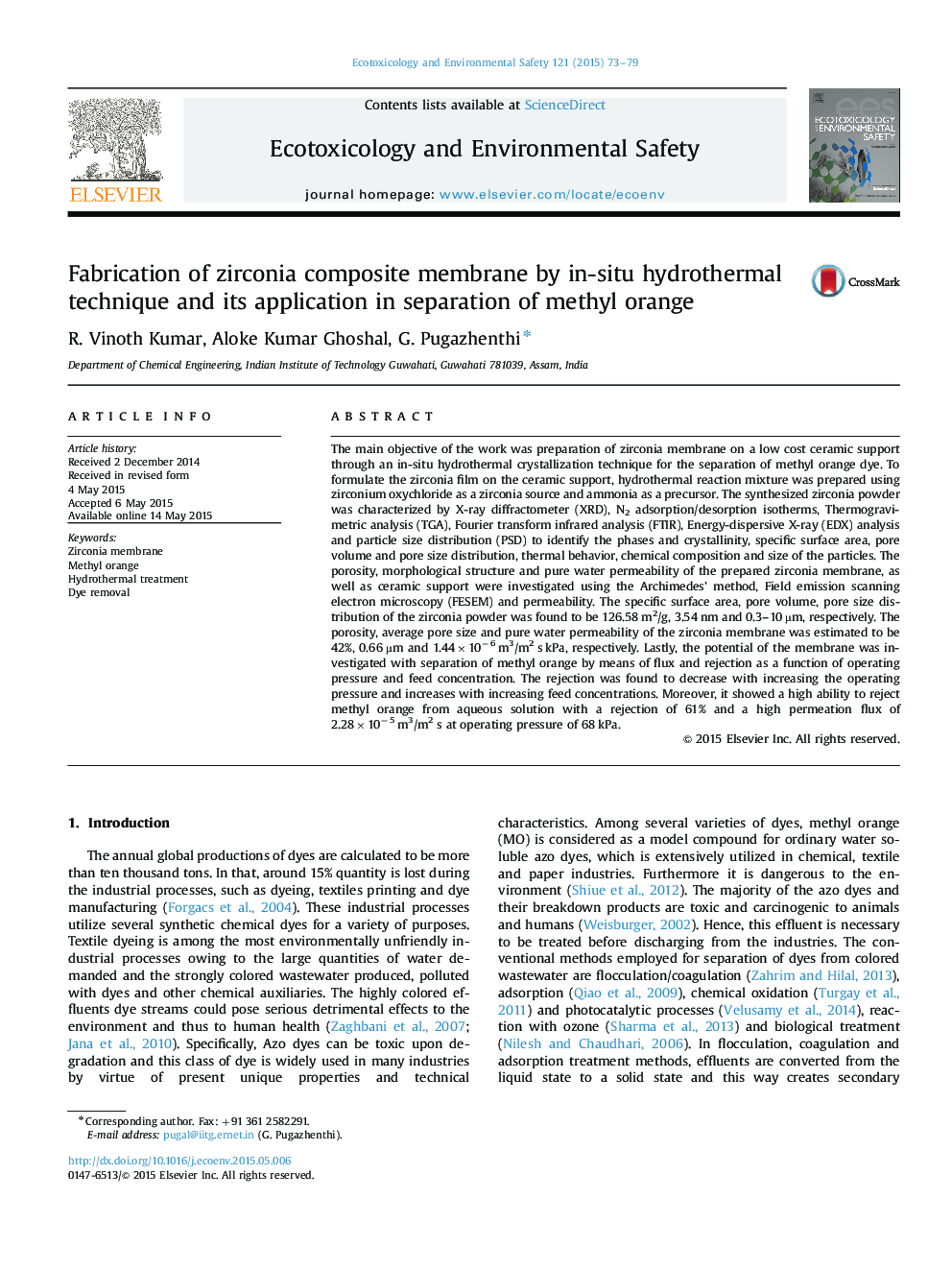| Article ID | Journal | Published Year | Pages | File Type |
|---|---|---|---|---|
| 4419295 | Ecotoxicology and Environmental Safety | 2015 | 7 Pages |
•Zirconia membrane with pore size of 0.66 µm was prepared by hydrothermal technique.•Performance of the membrane tested with methyl orange at various operating conditions.•Highest separation of 61% obtained with flux of 2.28×10−5 m3/m2 s.
The main objective of the work was preparation of zirconia membrane on a low cost ceramic support through an in-situ hydrothermal crystallization technique for the separation of methyl orange dye. To formulate the zirconia film on the ceramic support, hydrothermal reaction mixture was prepared using zirconium oxychloride as a zirconia source and ammonia as a precursor. The synthesized zirconia powder was characterized by X-ray diffractometer (XRD), N2 adsorption/desorption isotherms, Thermogravimetric analysis (TGA), Fourier transform infrared analysis (FTIR), Energy-dispersive X-ray (EDX) analysis and particle size distribution (PSD) to identify the phases and crystallinity, specific surface area, pore volume and pore size distribution, thermal behavior, chemical composition and size of the particles. The porosity, morphological structure and pure water permeability of the prepared zirconia membrane, as well as ceramic support were investigated using the Archimedes’ method, Field emission scanning electron microscopy (FESEM) and permeability. The specific surface area, pore volume, pore size distribution of the zirconia powder was found to be 126.58 m2/g, 3.54 nm and 0.3–10 µm, respectively. The porosity, average pore size and pure water permeability of the zirconia membrane was estimated to be 42%, 0.66 µm and 1.44×10−6 m3/m2 s kPa, respectively. Lastly, the potential of the membrane was investigated with separation of methyl orange by means of flux and rejection as a function of operating pressure and feed concentration. The rejection was found to decrease with increasing the operating pressure and increases with increasing feed concentrations. Moreover, it showed a high ability to reject methyl orange from aqueous solution with a rejection of 61% and a high permeation flux of 2.28×10−5 m3/m2 s at operating pressure of 68 kPa.
